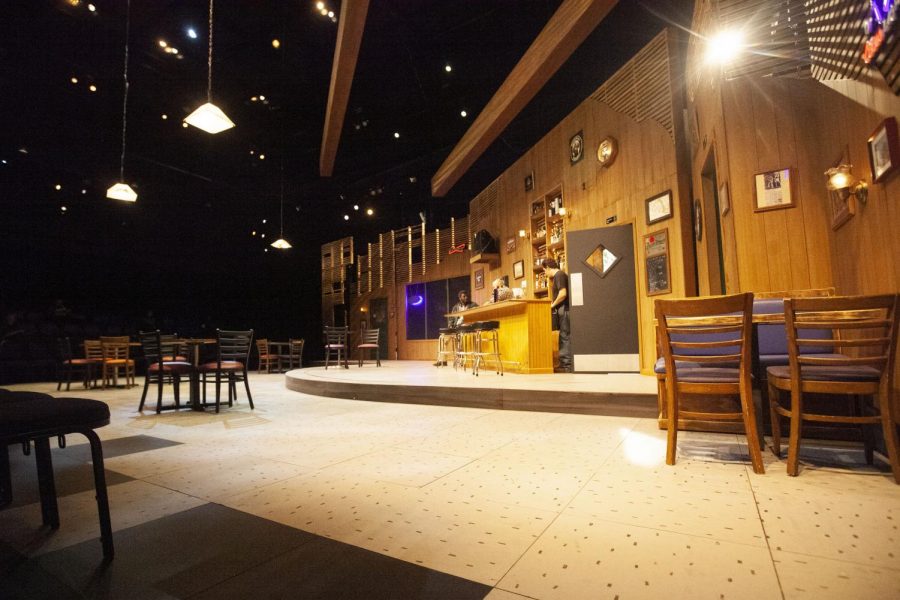Sweat, blood, and tears: an inside look at the UI Theater Department’s first mainstage production of the year
UI Theater Department brings to the stage the lives of those in early 2000’s Reading, Pennsylvania and their struggle with economic inequality.
The set of “Sweat” is seen during a dress rehearsal on October 8, 2019 in the David Thayer Theater. (Jenna Galligan/The Daily Iowan)
October 11, 2019
The theater was entirely sold out for Sweat’s opening night at the UI David Thayer Theater, and for good reason. It isn’t a show to miss.
Right from the opening scene, the audience is abruptly tossed into the world of Reading, where two young men are both speaking with a parole officer to get their lives back on track.
What they did to be in this situation is yet to be revealed, which keeps the audience on the edge of their seats as they are transported eight years back in time to the bar where the majority of the show will take place to get to the bottom of this mystery.
Related: Lessons from Sweat: A look at what UI’s upcoming production taught its cast and crew
The creative team behind Sweat was able to bring the audience back to the early 2000s by playing audio clips of politicians and popular music of the time, while overlaying the set with images of prominent newspaper headlines. This made it easy to feel like a part of Sweat’s world, which, in reality, was only a little over a decade ago and about 800 miles away from where the opening night crowd sat.
It feels right that Sweat is set in a bar, because watching the characters interact was like being a fly on the wall at any casual, American bar. The actors made their character’s friendships feel genuine, their strife heart-wrenching, and, most importantly, their lives real.
Sweat centers around how unemployment ruined lives of the people of Reading, but it isn’t as clear-cut as one might think. The show isn’t about how a rag-tag team of friends banded together to fight the evil corporate bigwigs. It unfolds in a way that’s more true to reality, and that’s what makes it so compelling to watch.
Each character provides unique insights into the situation, which leaves the audience with something to think about well after the show is over. In a play that’s based on a real and nuanced situation, the importance of representing several different points of view in a non-judgmental manner can’t be overstated, and Sweat does just that.
Despite being set in the 2000s, Sweat feels like an appropriately timed performance. It addresses racial tensions that have only become more prominent in the United States in the past few years. It also addresses shipping manufacturing jobs out of the country, which has become a major talking point for several politicians.

Sweat makes its audience acknowledge harsh realities, and re-evaluate their sense of right and wrong. There’s no clear cut villain or hero — just people trying to survive however they can, and defend what they believe is theirs.
By the end of the show, the audience is able to see where all the characters are coming from and how they got there, and, more importantly, are able to sympathize with each of them. By the time the curtain call comes around, it doesn’t matter who’s right and who’s wrong. The one thing the audience was left with was a sense that every character had been wronged, and the audience’s silence as the lights went down spoke volumes.



